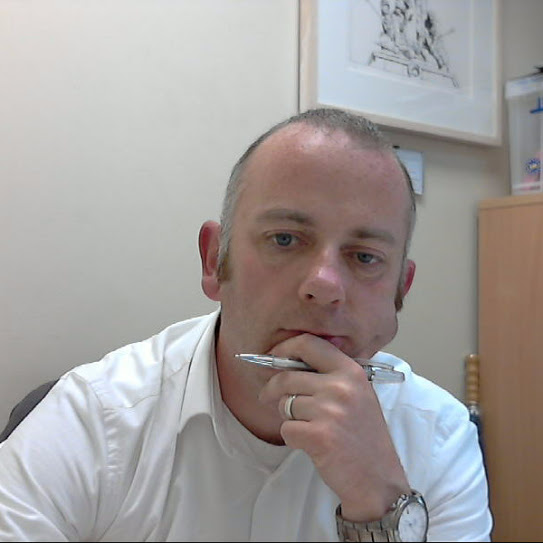Bronze collars from Denmark
Independent copper metallurgy?
Recognising Ores
Gold sourcing…
Early Irish goldwork appears to be derived from alluvial gold.
This is often collected by either place-mining or panning a process where the heavier density of the gold makes it sink and other soil and sediment is washed away.
Gold Sources?
Ireland continued to exploit local gold throughout the Bronze Age.
There is a synchronous change of source at the MBA-LBA transition (1150 BC).
Earlier gold was rarely re-cycled.
Chapman et al 2006 Applied Geochemistry Vol 21, 859-1092
Copper Ores
Copper mining: Ross Island 2400-2000 BC
Copper mining tools
Mount Gabriel (Cork), copper mines
Great Orme, copper mines (Wales)
Changes in Metalworking
Early Bronze Age
Simple one piece moulds
Changes in Metalworking
By the end of the Early Bronze Age
Two-piece (bi-valve) moulds in use
Metalworking Techniques in the Late Bronze Age
Some one-piece moulds and bi-valve, or two-piece, moulds continue in use
This is eventually followed by lost-wax casting in the Late Bronze Age
A model of the object to be cast is made in wax
This is encased in clay with vents and a gate left
This is heated the wax melts away via the vents
The molten bronze is poured through the gate and the mold is broken to remove the finished piece
Late Bronze Age Metalworking: Moulds
(Dun Aonghusa, Inis Mór)
Casting Using Lost Wax Method
‘Kurd’ buckets
3. Cape Castle, Antrim
4. Magilligan, Derry
‘Kurd’ buckets
Hosszúpályi (Hungary)
Lunulae
Two main types:
Classical and Unaccomplished – also Provincial Type (found in France and Britain)
Tamlaght Hoard, Co. Armagh
At least two sheet bronze bowls, one placed inside the other
A sword of Irish (possibly a Type 3)
Dates to the 11th century BC
Fuchsstadt-Type vessels
Fuchsstadt-Type vessel from Austria
Fuchsstadt-Type vessels
Jenisovice Type vessel
From Bjergsted, Skippinge, Denmark
Jenišovice-Type vessels
Pins and Bracelets
Ballytegan Hoard, Co. Laois
Contain sunflower pins (1, 2 and 4 below)
Disc-headed pins
(No. 3 below)
Triple-bracelet
See Danish sunflower pin below.
Bronze collars from Denmark
Raftery’s proposed development of gorgets
Sintra Collar, Portugal
Gold hats? (Probably bowls)
Gold ‘cones’
Aventon Berlin Ezelsdorf Schifferstadt
Aventon Berlin Ezelsdorf Schifferstadt
Rathgall, Co. Wicklow
Exotic finds are often associated with the major hillforts (date to around 1200 BC).
Finds have parallels in the southern Alpine area and Germany.
Shields: U-notched Type
Cloonlara, Co. Mayo
Wooden mould
Oak
48 cm diameter
Shields: U-notched Type
Churchfield, Co. Mayo
Wooden mould
Alder
Cut-out handle in rear
Shields: V-notched Type
Clonbrin, Co. Longford
Leather
50 cm in diameter
Engravings of V-notched shields
A group of monuments in Spain carry engraved scenes showing various weapons and shields. V-notched shields are prominent.
They are mostly in Extremadura
Appear to date to between 9th and 7th centuries BC.
Example on the right is from Solana de Cabañas
Brozas
V-notched shield on engraved 7th-8th century BC slab from Brozas, Cáceres in Spain
Cabeza de Buey
V-notched shields on engraved 7th-9th century BC slab from Cabeza de Buey (just south of Brozas)
Out of the distant past
Bronze and gold hoards:
Votive deposits or smiths’ stores?
Pins and Bracelets
Ballytegan Hoard, Co. Laois
Contain sunflower pins (1, 2 and 4 below)
Disc-headed pins
(No. 3 below)
Triple-bracelet
Tamlaght
Tamlaght
Tamlaght
Killymoon, Co. Tyrone
Gold hoard found during excavation
Dowris Hoard
Found during peat cutting in Offaly in the 1820s. Original number of objects is unknown.
Dowris Hoard
Buckets and Cauldrons
Cauldrons: Type A
Example from Dowris, Co. Offaly.
Horns
Cast bronze horns
Played using circular breathing
Two main types:
Horns: Class 1
Generally cast as a single piece
Mainly found in the north-east
Horns: Class 2
Occasionally manufactured in a number of sections
Mainly found in the south-west
Distribution of
Horns
Dowris is unusual in that both types are represented in the hoard.
Dowris Hoard
Weapons include both swords and spearheads
No. 5 in drawing is a chape (part of a scabbard)
Crotals
Purpose unknown (the term crotal denotes a small bell with an enclosed clapper)
39 from Dowris, one from Co. Antrim
Dowris hoard
Other finds include:
Axes
Chisels
Gouges
Socketed knives
Great Clare Gold Find
Gold found during railway building in 1854 near Mooghaun
Hoard was dispersed after find
Great Clare Gold Find
Some pieces are still being discovered
Great Clare Gold Find
a) 138 penannular bracelets with solid, evenly expanded, terminals.
b) 3 penannular bracelets with evenly expanded hollowed terminals.
c) 6 gold collars.
d) 2 lock-rings.
e) 2 penannular neck-rings.
f) 3 ingots.
g) 2 torcs.
Booleybrien, Co. Clare
Hoards
Hoards
Burton Hoard (Wales)
Single finds LBA
Weapons
Gold ornaments
Weapons
Gold ornaments
Newport, Co. Mayo
How to use this blog...
This blog allows you to explore some archaeological themes, periods and places. You can do this by: clicking the dates on the left to select particular posts; enter a term (e.g. Newgrange) in the search box below; scroll down and visit the Archaeology News section on the left.
